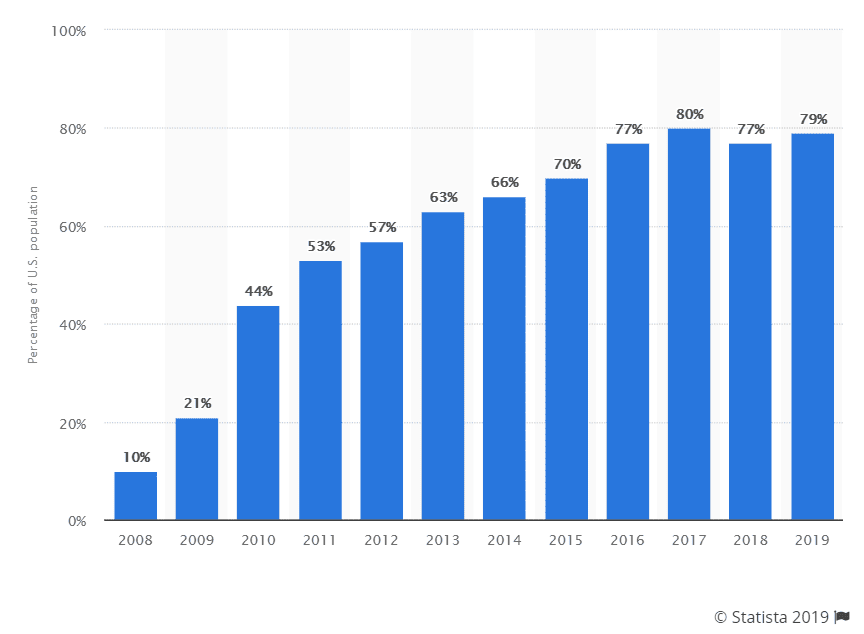In 2011, only a fourth (26%) of marketing professionals reported their felt overwhelmed by social media. Only 9% felt it makes their life easier.
Fast-forward to today.
Worldwide, 3.5 billion people use social media. In the U.S., 79% percent of people have at least one social media profile.

Clearly, it’s useful. But more and more, marketers admit it’s overwhelming. Being “on” 24/7 can easily cause burn-out.
The Challenges of Social Media
Because of the “always on” nature of social media, it’s easy to let social media engagement take over your life.
An alert tells you something has happened on one of the 4 to 7 platforms you’re active on. You quickly check to see what’s going on. And you’ve fallen down the rabbit hole.
An hour later, you may surface again, but you’ve lost track of what you were doing.
It doesn’t help that we get a dopamine rush every time we get a share or comment. Social media is addictive.
Trouble is, it’s doesn’t always provide the ROI to justify the time.
Social media has been hugely valuable to my business. My best clients and jobs started with a social media engagement — or someone seeing my post and calling me right away.
But marketers struggle to measure the real return on their social media efforts.

It Pays to be Social
Not too many years ago, businesses questioned the wisdom of spending time on social. Today, there’s no question we need to be social.
We need to be where our prospects are — and where they’re at is Facebook, LinkedIn, Twitter, to name only a few.
Studies have shown that customers found through social media are more valuable than customers found through other channels. For instance, a study performed by CareOne Debt Relief Services revealed that social media connections were:
- 179% more likely to fill out the consultation (lead generation) form.
- 217% more likely to make their first payment.
There’s no arguing with those numbers. The key is to drive Return while limiting the Investment.
3 Tips to Stay on Top of It
Don’t try to be active on every social media channel. Figure out where your customers hang out, and then test to see which channel gets the most engagement for your brand.
If it’s LinkedIn, go all-in on LinkedIn. If it’s Facebook or Pinterest, go all-in there.
Pace yourself. You need to be active on whichever site you choose. Post regularly. Share tips and ideas. Respond to other people’s posts, and reply when they respond to yours.
But pace yourself. You don’t need to reply immediately. And you can check out when your work day is over.
Block your time. Unless social media is your full-time job, you’ve got other (hopefully more important) things to do. Social media can be a small part of your job, but it should take over.
Block out some time each day to post, reply, and send messages. Then move on with your day. If your alerts are too distracting, mute them.
You can check in periodically, but try to do it on your schedule, not as an automatic response to every random alert. You’re not Pavlov’s dog.
Avoid Overwhelm By Taking Control
Social media is undeniably valuable… fun… time-consuming… all-consuming.
Keep the value. Keep the fun. But don’t let it be all-consuming. It doesn’t need to be.
You can participate when and how you decide, and still get all the value you need.
It’s a matter of who’s in control. Make sure it’s you.


